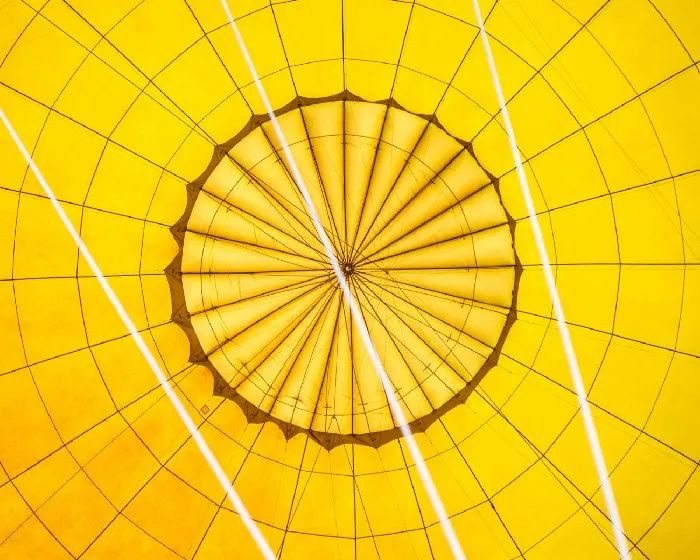遗传算法求解几何问题
点击上方“小白学视觉”,选择加"星标"或“置顶”
重磅干货,第一时间送达
作者 | Victor Sim
编译 | VK
来源 | Towards Data Science

我最近看了一个关于“令人难以置信的直觉人工智能发明”的ted演讲:https://www.ted.com/talks/maurice_conti_the_incredible_inventions_of_intuitive_ai
这个ted演讲的特色是使用直观的人工智能生成汽车模型。这部分内容很简短,没有详细说明什么类型的人工智能以及它是如何实现的,所以我决定尝试用遗传算法复制这个项目的一个小规模版本。
我为什么选择遗传算法?与神经网络不同的是,遗传算法可以很容易地生成内容,而无需对图像进行卷积,然后将其转换回原始尺寸。但是,要找到正确格式的汽车模型数据是极其困难的,
概述了项目类型后,我应该如何简化问题?
概念
我将用简单的想法来代替制造低空气阻力的汽车,即创建一个由n个点组成的最大区域的形状,以点连接的方式。
形状的面积将使用鞋带(Shoelace )公式计算。从名称中可以推导出它是如何工作的:点坐标的交叉乘法创建了鞋带类型模式。
然后我将使用一种遗传算法(改编自这段代码:https://troysquillaci.me/simple-genetic-algorithm.html)来生成一组数字,然后将这些数字转换为坐标,从而绘制出一个形状。
代码
步骤1 |依赖项
import random
import numpy as np
from IPython.display import clear_outputdef sigmoid(x):
return 1/(1+np.exp(-x))
def PolyArea(x,y):
return 0.5*np.abs(np.dot(x,np.roll(y,1))-np.dot(y,np.roll(x,1)))
导入程序运行所需的基本依赖项。random用于随机生成智能体,numpy用于初始化和操作矩阵,IPython display用于清除屏幕上的混乱。
为了简单起见,我将在这个项目中使用的唯一激活函数是sigmoid函数。
polyarea函数是以numpy为数学基础的鞋带算法的实现。
步骤2 |实现类
class genetic_algorithm:
def execute(pop_size,generations,threshold,network):
class Agent:
def __init__(self,network):
class neural_network:
def __init__(self,network):
self.weights = []
self.activations = []
for layer in network:
if layer[0] != None:
input_size = layer[0]
else:
input_size = network[network.index(layer)-1][1]
output_size = layer[1]
activation = layer[2]
self.weights.append(np.random.randn(input_size,output_size))
self.activations.append(activation)
def propagate(self,data):
input_data = data
for i in range(len(self.weights)):
z = np.dot(input_data,self.weights[i])
a = self.activations[i](z)
input_data = a
yhat = a
return yhat
self.neural_network = neural_network(network)
self.fitness = 0
self.gene_drive = []
def __str__(self):
return 'Loss: ' + str(self.fitness[0])
这是程序的开始,创建了遗传算法类和执行函数。
在agent的init中,初始化一个神经网络类,并根据给定的矩阵结构随机生成其权重。
步骤3 |创建种群
def generate_agents(population, network):
return [Agent(network) for _ in range(population)]
该函数以种群大小和网络结构为参数,生成智能体的种群,神经网络随机生成权值。
步骤4 |计算适合度
def fitness(agents):
for agent in agents:
total_area = 0
points = agent.neural_network.propagate(np.random.randn(1,semi_epochs))
for shape in points:
x = list(shape[:num_points])
y = list(shape[num_points:])
y.insert(0,0)
x.insert(0,0)
y.insert(-1,0)
x.insert(-1,0)
total_area += PolyArea(x,y)
agent.fitness = total_area/semi_epochs
return agents
我们将潜在点作为神经网络的输入。正因为如此,网络将进行多次尝试来生成形状,并记录这些形状的平均面积。
理论上,该算法将生成一个智能体,该智能体可以一致地生成具有n个点的高区域形状。观察这些形状可以帮助我们了解如何创建大面积的区域。
步骤5 |选择
def selection(agents):
agents = sorted(agents, key=lambda agent: agent.fitness, reverse=True)
print('\n'.join(map(str, agents)))
agents = agents[:int(0.2 * len(agents))]
return agents
程序的这一部分是选择算法,它根据智能体的适合度按逆序对它们进行排序。然后它会保留前五名。
步骤6 |交叉:
def crossover(agents,network,pop_size):
offspring = []
for _ in range((pop_size - len(agents)) // 2):
parent1 = random.choice(agents)
parent2 = random.choice(agents)
child1 = Agent(network)
child2 = Agent(network)
shapes = [a.shape for a in parent1.neural_network.weights]
genes1 = np.concatenate([a.flatten() for a in parent1.neural_network.weights])
genes2 = np.concatenate([a.flatten() for a in parent2.neural_network.weights])
split = random.randint(0,len(genes1)-1)child1_genes = np.array(genes1[0:split].tolist() + genes2[split:].tolist())
child2_genes = np.array(genes1[0:split].tolist() + genes2[split:].tolist())
for gene in parent1.gene_drive:
child1_genes[gene] = genes1[gene]
child2_genes[gene] = genes1[gene]
for gene in parent2.gene_drive:
child1_genes[gene] = genes2[gene]
child2_genes[gene] = genes2[gene]
child1.neural_network.weights = unflatten(child1_genes,shapes)
child2.neural_network.weights = unflatten(child2_genes,shapes)
offspring.append(child1)
offspring.append(child2)
agents.extend(offspring)
return agents
从种群的20%中随机选出两个父母。然后繁殖。如何做到这一点:
他们的权重平坦化(flatten)
找到一个随机的交点。这一点是单亲的遗传信息结束的地方,也是单亲遗传信息开始的地方。
将创建两个子代,然后将其添加到智能体列表中。这些子对象彼此不同,因为它们有不同的交点。
这有希望让好父母的优良品质遗传给后代。
步骤7 |突变
def mutation(agents):
for agent in agents:
if random.uniform(0.0, 1.0) <= 0.1:
weights = agent.neural_network.weights
shapes = [a.shape for a in weights]flattened = np.concatenate([a.flatten() for a in weights])
randint = random.randint(0,len(flattened)-1)
flattened[randint] = np.random.randn()newarray = []
indeweights = 0
for shape in shapes:
size = np.product(shape)
newarray.append(flattened[indeweights : indeweights + size].reshape(shape
indeweights += size
agent.neural_network.weights = newarray
return agents
有10%的几率发生突变。在这种情况下,变异指的是某个权重值被一个随机浮点值替换。通过将权重展平,找到要更改的随机权重。
步骤9 |执行
for i in range(generations):
print('Generation',str(i),':')
agents = generate_agents(pop_size,network)
agents = fitness(agents)
agents = selection(agents)
agents = crossover(agents,network,pop_size)
agents = mutation(agents)
agents = fitness(agents)
if any(agent.fitness > threshold for agent in agents):
print('Threshold met at generation '+str(i)+' !')
if i % 100:
clear_output()
return agents[0]
将最后一段代码粘贴到函数中,函数应该在调用时运行。
num_points = 3
semi_epochs = 100
network = [[semi_epochs,100,sigmoid],[None,num_points*2,sigmoid]]
ga = genetic_algorithm
agent = ga.execute(100,100,10,network)
weights = agent.neural_network.weights
我们可以改变程序可以用来创建形状的点的数量,以及程序可以生成点的次数,以得到平均值。改变这些值,你可能会发现一些有趣的东西!
原文链接:https://towardsdatascience.com/using-genetic-algorithms-to-solve-geometrical-problems-3789cb70bf25
交流群
欢迎加入公众号读者群一起和同行交流,目前有SLAM、三维视觉、传感器、自动驾驶、计算摄影、检测、分割、识别、医学影像、GAN、算法竞赛等微信群(以后会逐渐细分),请扫描下面微信号加群,备注:”昵称+学校/公司+研究方向“,例如:”张三 + 上海交大 + 视觉SLAM“。请按照格式备注,否则不予通过。添加成功后会根据研究方向邀请进入相关微信群。请勿在群内发送广告,否则会请出群,谢谢理解~
